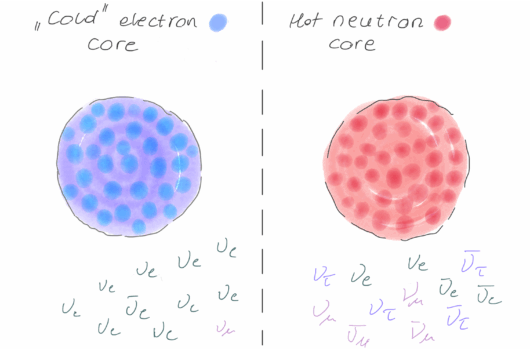Magnetically Driven Neutron-rich Ejecta Unleashed: Global 3D Neutrino–General Relativistic Magnetohydrodynamic Simulations of Collapsars Probe the Conditions for r-process Nucleosynthesis
Magnetically Driven Neutron-rich Ejecta Unleashed: Global 3D Neutrino–General Relativistic Magnetohydrodynamic Simulations of Collapsars Probe the Conditions for r-process Nucleosynthesis
View
Abstract
Collapsars—rapidly rotating stellar cores that form black holes—can power gamma-ray bursts and are proposed to be key contributors to the production of heavy elements in the Universe via the rapid neutron capture process (r-process). Previous neutrino-transport collapsar simulations have been unable to unbind neutron-rich material from the disk. However, these simulations have not included sufficiently strong magnetic fields and the black hole (BH), both of which are essential for launching mass outflows. We present νh-amr, a novel neutrino-transport general relativistic magnetohydrodynamic (νGRMHD) code, which we use to perform the first 3D global νGRMHD collapsar simulations. We find a self-consistent formation of a weakly magnetized dense accretion disk, which has sufficient time to neutronize. Eventually, substantial magnetic flux accumulates near the BH, becomes dynamically important, leads to a magnetically arrested disk (MAD), and unbinds some of the neutron-rich material. However, the strong flux also hinders accretion, lowers density, and increases neutrino-cooling timescale, which prevents further disk neutronization. Typical collapsar progenitors with mass accretion rates, ![]() , do not produce significant neutron-rich (Ye < 0.25) ejecta. However, we find that MADs at higher mass accretion rates,
, do not produce significant neutron-rich (Ye < 0.25) ejecta. However, we find that MADs at higher mass accretion rates, ![]() (e.g., for more centrally concentrated progenitors), can unbind Mej ≲ M⊙ of neutron-rich ejecta. The outflows inflate a shocked cocoon that mixes with the infalling neutron-poor stellar gas and raises the final outflow Ye; however, the final r-process yield may be determined earlier at the point of neutron capture freeze-out. Future work will explore under what conditions more typical collapsar engines become r-process factories.
(e.g., for more centrally concentrated progenitors), can unbind Mej ≲ M⊙ of neutron-rich ejecta. The outflows inflate a shocked cocoon that mixes with the infalling neutron-poor stellar gas and raises the final outflow Ye; however, the final r-process yield may be determined earlier at the point of neutron capture freeze-out. Future work will explore under what conditions more typical collapsar engines become r-process factories.




